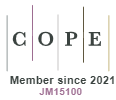Fiscal quantifications in the structure of an official text from the 17th century
DOI:
https://doi.org/10.18778/0208-6077.48.03Keywords:
text structure, official text, quantification, lustration, inwentoryAbstract
The strategy of the lustration procedure drawn from the parliament’s acts and fiscal instructions that shaped 17th century official discourse, consisted of an inventory comprising the royal assets in a specific structural formula based on a fiscal calculative pattern used for tax purposes. The inventory’s structure comprised the following text sequences: 1. Showing the source of revenue. 2. Showing the revenue. 3. Showing the costs of income. 4. Showing the income. 5. Determining the amount of tax liability from the earned income.
A fiscal operation treated in a numerical way as a certain calculative concept became a constructional diagram, which textually materialised itself in lustration inventories of cities, villages and farms throughoutthe Lviv area, which were developed in a repetitive discursive practice.
A quantitative assessment in lustration inventories used for tax purposes, except for structural exponents, also has some other textual exponents, which refer to assessable areas of land, the number of outbuildings, the amount of harvest, time of work, amount of money, tax liability or the number of people.They primarily included cardinal and ordinal numbers, expressed linguistically and numerically, indicating a particular number of units which were subject to quantification, lexemes which expressed approximate values, that is indefinite numerals, and also units of measurement.
Official quantitative conceptualization, which was pragmatically conditioned, as it was in accordance with fiscaland parliamentary directives used with royal assets, expressed itself in the 17th century lustration texts using a serial and repetitive textual processin a structural and stylistic dimension.
Downloads
References
Arłamowscy E., K. (wyd.), 1974, Lustracja województwa ruskiego 1661-1665, cz. 2. Ziemia lwowska, Wrocław-Warszawa-Kraków-Gdańsk.
Google Scholar
Arłamowski K., Kaput W. (wyd.), 1970, Lustracja województwa ruskiego 1661-1665, cz. 1. Ziemia przemyska i sanocka, Wrocław-Warszawa-Kraków.
Google Scholar
Biniewicz J., 2013, O mierzeniu obiektów w traktacie Stanisława Grzepskiego słów kilka, w: Cum reverentia, gratia, amicitia … Księga jubileuszowa dedykowana Profesorowi Bogdanowi Walczakowi, red. J. Migdał i A. Piotrowska-Wojaczyk, I, Poznań, s. 169-180.
Google Scholar
Choduń A., 2010, Prawo a język urzędowy, w: Język w prawie, administracji i gospodarce, red. K. Michalewski, Łódź, s. 9-18.
Google Scholar
Kamińska M., 1989, Lustracje dóbr gnieźnieńskich jako źródło do znajomości polszczyzny XVII wieku, „Rozprawy Komisji Językowej”, t. XXXV, s. 133-142.
Google Scholar
Kula W., 1970, Miary i ludzie, Warszawa.
Google Scholar
Malinowska E., 1999, Język w urzędach, w: Polszczyzna 2000. Orędzie o stanie języka na przełomie tysiącleci, red. W. Pisarek, Kraków, s. 75-96.
Google Scholar
Niebrzegowska-Bartmińska S., 2007, Wzorce tekstów ustnych w perspektywie etnolingwistycznej, Lublin.
Google Scholar
Siuciak M., 2013, Siła i moc jako wykładniki oceny ilościowej w dawnej polszczyźnie, w: Cum reverentia, gratia, amicitia… Księga jubileuszowa dedykowana Profesorowi Bogdanowi Walczakowi, red. J. Migdał i A. Piotrowska-Wojaczyk, III, Poznań, s. 213-220.
Google Scholar
Wojtak M., 1993, Styl urzędowy, w: Współczesny język polski, red. J. Bartmiński, Lublin, s. 147-162.
Google Scholar
Wróbel-Lipowa K., 1986, Kultura materialna miast królewskich województwa bełskiego w XVIII w. Dubienka, Grabowiec, Horodło, Tyszowce, Lublin.
Google Scholar
Zajda A., 1979, Nazwy staropolskich powinności feudalnych danin i opłat (do 1600 roku), Warszawa-Kraków.
Google Scholar
Downloads
Published
How to Cite
Issue
Section
License

This work is licensed under a Creative Commons Attribution-NonCommercial-NoDerivatives 4.0 International License.










